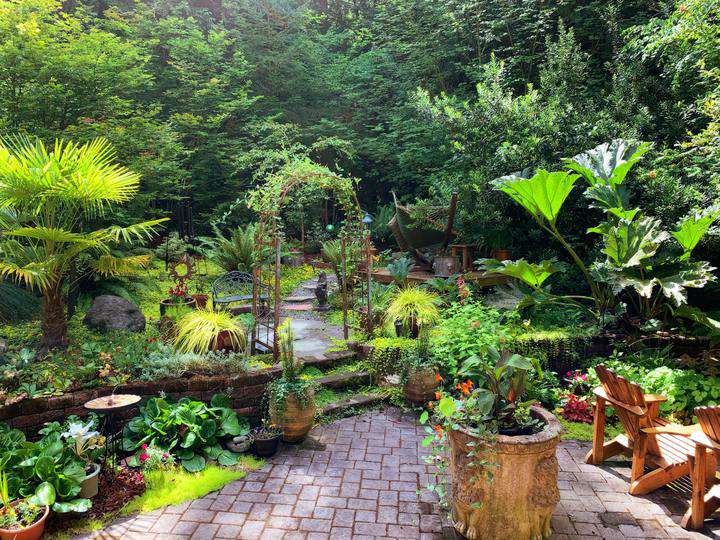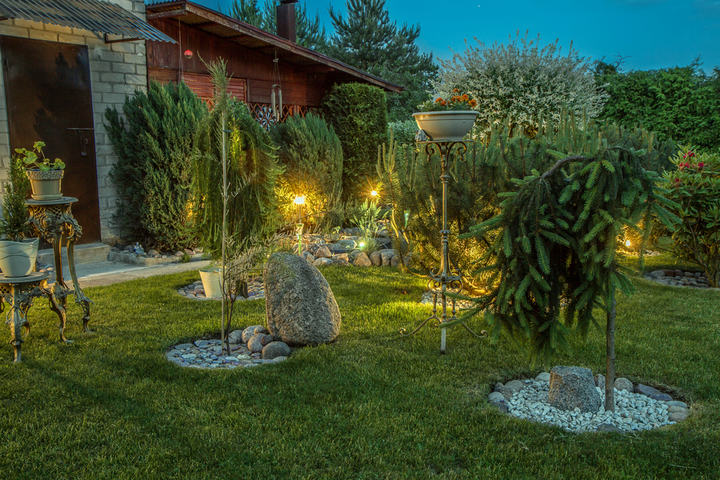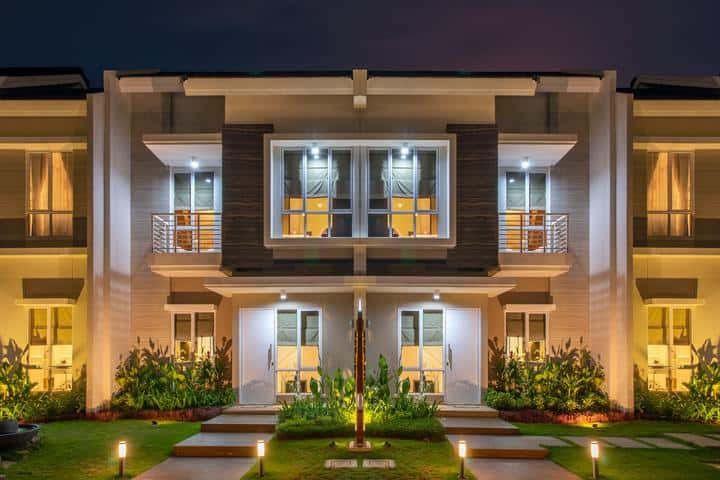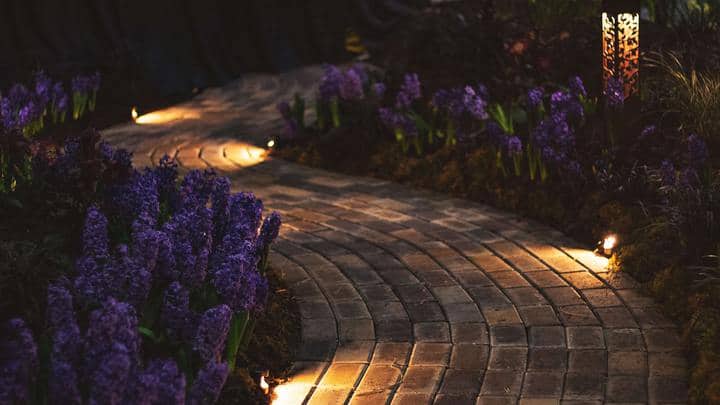Deciding how many lights you need to buy for your garden isn’t just as simple as measuring the space to see how much coverage you need.
There’s more to it than that because there are different choices you can make for how to light your garden based on different principles.
Landscape lighting is unique not just to your home but also to you.
The number of landscape lights you need depends on the size of your garden, any notable features you want to highlight, and any safety lighting you wish to add. For aesthetic purposes, a balance is essential – too much lighting will look too bright and can even damage your garden.
While I can’t give you an exact number of lights you need for your own landscape setup, I can help you by explaining:
- Some key landscape lighting design principles
- How you can use those to plan your lights
- The balance between too little and too bright
Landscape Lighting Design Principles

There are various ways you can choose to light your garden and some decisions that can factor into how many lights you’ll need.
Lighting Techniques
Firstly it’s worth thinking about which lighting techniques will work best for your garden.
There are various options, and I will explain them briefly below, but here is a handy video:
Uplighting – use this to highlight larger features such as trees or feature walls. The light is placed low to/on the ground and pointed upwards to highlight the feature.
Accenting is similar to uplighting but focused on a smaller area, such as a small shrub or a statue. You’d use accenting where you wanted something to really stand out.
Shadowing – is a similar technique to uplighting; the aim here is to cast a shadow from a feature onto a wall behind. This works well if you have trees in front of a non-textured wall of your home.
Moonlighting – is almost the opposite of uplighting. This uses a light placed high up to nearly act as fake moonlight, illuminating an area below.
Wall washing – where you have a wall or fence that you want to be lit up, use wall-washing to create a consistent light across the whole feature.
Line of Sight
Once you’ve considered the features in your garden and the sort of lighting techniques you want to use, next, you should think about the line of sight.
Where will you spend most of your time in your home or outdoor space?
For example, say you have a beautiful tree at the back of your home, and you’re considering shadowing to project it onto your wall.
Unless you spend time at the bottom of your garden regularly, what’s the point?
You’ll never enjoy the effect.
So instead, look to focus your attention on the parts of your garden or outdoor space that you’ll see most when you arrive home.
When you’re either relaxing indoors and looking out or sitting on your decking or patio area.
Proximity & Layering
I’ve grouped these together because, in terms of planning how many lights you need, they have similar considerations.
Proximity is how close you want the light to be to your feature. The closer the light, the more intense it will be.
You’ll need multiple lights if you’re wall-washing for a consistent effect. And if you’re closer to the wall, you’ll therefore need more lights.
Also, think about layering. You don’t want one consistent brightness across your entire garden.
It won’t look great, since everything will appear flat and fake. Instead, make key features brighter and aim to use more gentle lighting on wider spaces.
Garden Maintenance

A minor consideration but one that’s worth mentioning. You need to think about your garden maintenance when planning your lighting setup.
Pruning a tree will mean you need fewer lights to highlight it properly since there’s a less dense area to cover.
At the same time, you’ll also want to use fewer lights to highlight an area that you can’t maintain, whether it’s beyond your skills as a gardener or you just don’t have time.
Softer lighting, which you can create with fewer lights at a further distance from the feature, will hide any less-cared-for spaces.
Safety
A lot of landscape lighting is designed for safety. For example, patio lights help make the entrance to your home more welcoming to you and less welcoming to any intruders.
Pathway lights prevent you from tripping, particularly on uneven surfaces.
Every patio, home entrance, and the pathway is different. Consider the size, steps, and edges you want to make sure are illuminated.
If you have a pathway with lots of steps, you’ll want more lights to make sure each edge is properly lit – fewer lights can cast shadows which can hide the hazards.
How Many Landscape Lights Do I Need?

Once you’ve considered all of the above, you should be able to start working out how many lights you’re going to need.
It’s a very individual decision based on your space and preferences, but follow these steps to help you decide:
- Work out which features of your space you want to light up
- Decide which lighting technique will work best, and plan how you’ll achieve that
- Sense-check your line of sight – have you planned for areas that you won’t spend much time enjoying? Do you need to adjust any planned angles?
- How bright do you want each feature to be, and how many lights will you need to achieve that?
- Could you save any lights by doing some maintenance on trees and shrubs?
- Are there any areas you need to add lights to for safety reasons?
This should give you a good idea of the number of lights you need. It’s not as tricky as it seems when you follow these logical steps.
Finding The Balance

One essential thing is making sure you get the right balance with your garden lighting.
While you want to make sure you focus on the best features of your outdoor space, try not to leave too many gaps in your lighting.
It’ll feel disjointed if you have a large space but only a few highlighted features. It’ll look like half a job, or some bulbs have blown.
Softer lighting between the main features helps to give your whole space more of a consistent feel, and then you can layer on brighter lights for the features.
At the same time, don’t go too bright unless you want your garden to look like a theme park parade. It’ll be garish and headache-inducing.
Plus, too much light could easily mess with your plant life and disrupt their natural cycle, not to mention neighbours.
Final Words
You don’t have to be an expert landscape designer to find the best way to light up your garden.
You need to ask just a few questions about your space, and then you’ll know how you want everything to look.
From there, choosing the right number of lights is relatively straightforward.
Remember to strike a good balance – don’t use just a couple of lights spaced too far apart, and don’t light up your garden like a beacon.
For anyone who’s already installed their landscape lighting, how many did you go for, and are you happy with your choices?

